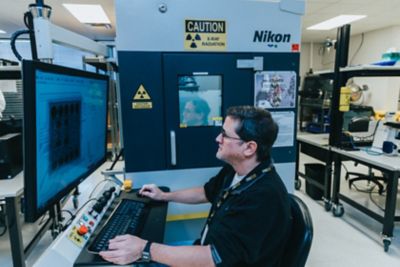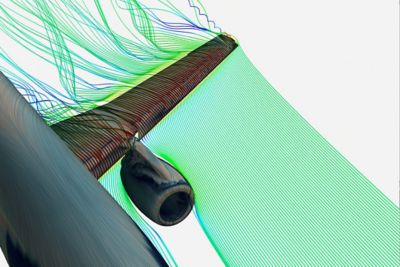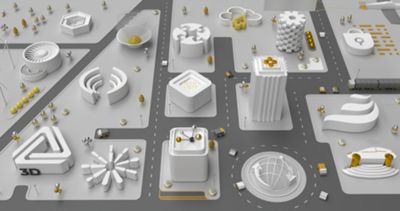Case Study
-
United States -
United Kingdom -
India -
France -
Deutschland -
Italia -
日本 -
대한민국 -
中国 -
台灣
-
Ansys는 학생들에게 시뮬레이션 엔지니어링 소프트웨어를 무료로 제공함으로써 오늘날의 학생들의 성장을 지속적으로 지원하고 있습니다.
-
Ansys는 학생들에게 시뮬레이션 엔지니어링 소프트웨어를 무료로 제공함으로써 오늘날의 학생들의 성장을 지속적으로 지원하고 있습니다.
-
Ansys는 학생들에게 시뮬레이션 엔지니어링 소프트웨어를 무료로 제공함으로써 오늘날의 학생들의 성장을 지속적으로 지원하고 있습니다.
“With NVIDIA DGX and Ansys Fluent software, we are able to reduce the runtimes of our internal drive flow models from hours to minutes, approximately a 50 times improvement.”
— Kent Forbord, Senior Director of Advanced Mechanical Development, Seagate
As artificial intelligence (AI) becomes more prevalent across industries around the world, the need for greater data storage is rapidly increasing. To meet demands sustainably, Seagate Technology, a leader in mass-capacity data storage solutions, uses Ansys simulation and NVIDIA graphics processing unit (GPU) hardware to develop its Mozaic hard drive technology, which stores data at previously unachievable levels without increasing power consumption.
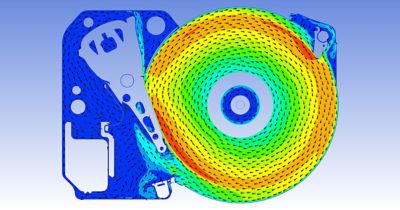
A computational fluid dynamics (CFD) simulation of a hard drive’s internal flow velocity in the Ansys Fluent platform. Image: Seagate Technology.
Challenges
Although adding disks to a hard drive increases storage capacity, it also increases material usage and power consumption. Alternatively, increasing areal density — the storage capacity per square inch of an object’s surface — enables each disk to hold greater data without using more material or disks.
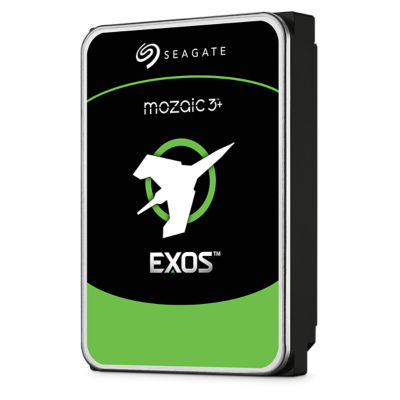
Exos Mozaic 3+ hard drives hold up to 32 terabytes (TB) of data.
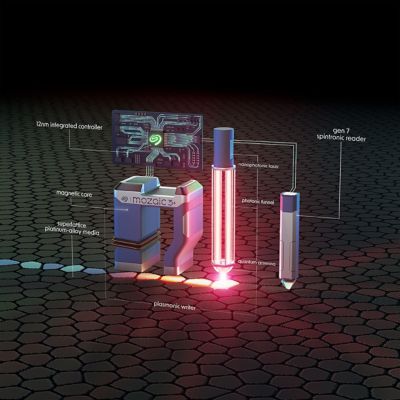
Forthcoming Seagate hard drive models Mozaic 4+ and Mozaic 5+ will be able to store 4 TB and 5 TB of data per disk, respectively.
Seagate’s previous workstation for computational fluid dynamics (CFD) studies to identify optimal designs for greater storage capacity was comprised of 40-core CPUs. Seagate’s CPU-based runtimes were approximately one month for chassis-level aeroacoustics models with a mesh size of about 50 million cells, while finer, higher-quality mesh containing up to 100 million cells took even longer. This was a cumbersome and time-consuming workflow that had to be changed.
Engineering Solutions
By integrating Ansys Fluent fluid simulation software and NVIDIA’s accelerated compute power via an NVIDIA DGX system, Seagate reduced the runtimes of their internal drive flow models from hours to minutes, resulting in a 50X improvement.
To increase track densities, Seagate uses Fluent software to optimize key airflow metrics in the drive, such as particle transport, windage drag, and structure excitation. At the system level, engineers perform thermal analyses to model the dynamic excitation on the outside of the drive, temperature, and pressure drop to assess cooling flow throughout the system. The team also performs aeroacoustics simulation to improve system chassis and fan designs.
Running these studies on Fluent software’s native multi-GPU solver, enabled by NVIDIA GPUs, enabled Seagate to greatly reduce their overall runtimes. This helped them meet their goal of reduced prototyping and physical testing, which ultimately led to shorter design cycles.
Seagate’s current Mozaic platform, Mozaic 3+, features areal densities of 3 TB per platter. Anticipated models Mozaic 4+ and Mozaic 5+ will store 4 TB and 5 TB of data per platter, respectively.
Benefits
- Seagate reduces the runtimes of its internal drive flow models from hours to minutes — approximately a 50X improvement — and reduces external aeroacoustics model runtimes from one month to less than one day.
- With reduced solve times, Seagate evaluates more designs in a shorter time and achieves a more optimal design.
- Seagate reduces prototyping and physical testing through more upfront modeling and design optimization, which helps shorten the design cycle.
- Ansys and NVIDIA technologies enable Seagate to streamline the innovation process and speed up time to market.
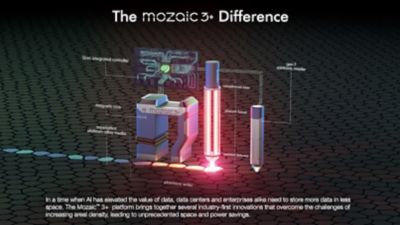
Designed with the most advanced materials and structures, Seagate’s Mozaic drives enable data centers to store more data in less space more efficiently.
시작하기
엔지니어링 과제에 직면하고 있다면우리 팀이 도와드리겠습니다. 풍부한 경험과 혁신에 대한 헌신을 가지고 있는 우리에게 연락해 주십시오. 협력을 통해 엔지니어링 문제를 성장과 성공의 기회로 바꾸십시오. 지금 문의하기






